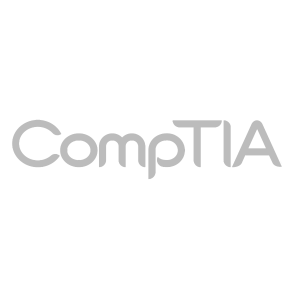Description
Course Objectives
About the Project Management Professional Certification
Employers will need to fill over 2 million new project-oriented roles each year through 2027. This means skilled project managers are in high demand. The PMP certification is designed by project professionals, for project professionals and validates that you are among the best—highly skilled in:
- People: emphasizing the soft skills you need to effectively lead a project team in today’s changing environment.
- Process: reinforcing the technical aspects of successfully managing projects.
- Business Environment: highlighting the connection between projects and organizational strategy.
PMP certification validates that you have the project leadership skills employers seek. The new PMP includes three key approaches:
- Predictive (waterfall)
- Agile
- Hybrid
Gain a competitive edge. Prove you work smarter. Make your goals a reality. Earn the PMP today.
Why the PMP
- The PMP adds value. CIO magazine ranked the PMP as the top project management certification in North America because it demonstrates you have the specific skills employers seek, dedication to excellence and the capacity to perform at the highest levels.
- The PMP delivers benefits. The median salary for project professionals in North America is 25% higher than those without it.
- The PMP proves you work smarter. It shows you have the skills to drive business results and increase your organization’s impact in the office and around the world.
Outline: Project Management Professional Certification (PMP) (9314)
The training will prepare you for the PMP Exam which tests for:
Domain I – People (42%)
Task 1 – Manage conflict
- Interpret the source and stage of the conflict
- Analyze the context for the conflict
- Evaluate/recommend/reconcile the appropriate conflict resolution solution
Task 2 – Lead a team
- Set a clear vision and mission
- Support diversity and inclusion (e.g., behavior types, thought process)
- Value servant leadership (e.g., relate the tenets of servant leadership to the team)
- Determine an appropriate leadership style (e.g., directive, collaborative)
- Inspire, motivate, and influence team members/stakeholders (e.g., team contract, social contract, reward system)
- Analyze team members and stakeholders’ influence
- Distinguish various options to lead various team members and stakeholders
Task 3 – Support team performance
- Appraise team member performance against key performance indicators
- Support and recognize team member growth and development
- Determine appropriate feedback approach
- Verify performance improvements
Task 4 – Empower team members and stakeholders
- Organize around team strengths
- Support team task accountability
- Evaluate demonstration of task accountability
- Determine and bestow level(s) of decision-making authority
Task 5 – Ensure team members/stakeholders are adequately trained
- Determine required competencies and elements of training
- Determine training options based on training needs
- Allocate resources for training
- Measure training outcomes
Task 6 – Build a team
- Appraise stakeholder skills
- Deduce project resource requirements
- Continuously assess and refresh team skills to meet project needs
- Maintain team and knowledge transfer
Task 7 – Address and remove impediments, obstacles, and blockers for the team
- Determine critical impediments, obstacles, and blockers for the team
- Prioritize critical impediments, obstacles, and blockers for the team
- Use network to implement solutions to remove impediments, obstacles, and blockers for the team
- Re-assess continually to ensure impediments, obstacles, and blockers for the team are being addressed
Task 8 – Negotiate project agreements
- Analyze the bounds of the negotiations for agreement
- Assess priorities and determine ultimate objective(s)
- Verify objective(s) of the project agreement is met
- Participate in agreement negotiations
- Determine a negotiation strategy
Task 9 – Collaborate with stakeholders
[list [*] Evaluate engagement needs for stakeholders [*] Optimize alignment between stakeholder needs, expectations, and project objectives [*] Build trust and influence stakeholders to accomplish project objectives [/list]
Task 10 – Build shared understanding
- Break down situation to identify the root cause of a misunderstanding
- Survey all necessary parties to reach consensus
- Support outcome of parties’ agreement
- Investigate potential misunderstandings
Task 11 – Engage and support virtual teams
- Examine virtual team member needs (e.g., environment, geography, culture, global, etc.)
- Investigate alternatives (e.g., communication tools, colocation) for virtual team member engagement
- Implement options for virtual team member engagement
- Continually evaluate effectiveness of virtual team member engagement
Task 12 – Define team ground rules
- Communicate organizational principles with team and external stakeholders
- Establish an environment that fosters adherence to the ground rules
- Manage and rectify ground rule violations
Domain III – Business Environment (8%)
Task 1 Plan and manage project compliance
- Confirm project compliance requirements (e.g., security, health and safety, regulatory compliance)
- Classify compliance categories
- Determine potential threats to compliance
- Use methods to support compliance
- Analyze the consequences of noncompliance
- Determine necessary approach and action to address compliance needs (e.g., risk, legal)
- Measure the extent to which the project is in compliance
Task 2 Evaluate and deliver project benefits and value
- Investigate that benefits are identified
- Document agreement on ownership for ongoing benefit realization
- Verify measurement system is in place to track benefits
- Evaluate delivery options to demonstrate value
- Appraise stakeholders of value gain progress
Task 3 Evaluate and address external business environment changes for impact on scope
- Survey changes to external business environment (e.g., regulations, technology, geopolitical, market)
- Assess and prioritize impact on project scope/backlog based on changes in external business environment
- Recommend options for scope/backlog changes (e.g., schedule, cost changes)
- Continually review external business environment for impacts on project scope/backlog
Task 4 Support organizational change
- Assess organizational culture
- Evaluate impact of organizational change to project and determine required actions
- Evaluate impact of the project to the organization and determine required actions



